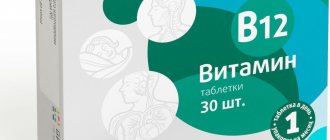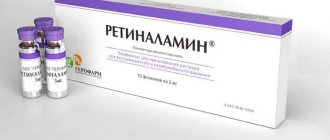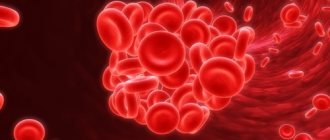We all need protection to one degree or another. External and internal. The body and mind are quite fragile and can be strengthened and supported in different ways. Even with medication.
If a person experiences negative effects (stress, shock, ischemia, intoxication, cerebrovascular accident, etc.), then the doctor may prescribe Mexidol.
Mexidol is a good helper in the fight against stress
Operating principle
The drug belongs to the group of heteroaromatic antioxidants and basically contains ethylmethylhydroxypyridine succinate, which in turn protects cell membrane lipids and reduces the level of free radicals in the body. This significantly expands the spectrum of pharmacological action. Mexidol has an antihypoxic (saturates the blood with oxygen), anti-stress, anticonvulsant effect. It also has nootropic properties, prevents and reduces memory impairment, increases concentration and performance, and reduces the manifestation of alcohol intoxication. Restores the sleep-wake cycle, improves the metabolism of brain tissue and their blood supply, improves microcirculation and rheological properties of blood (its fluidity), reduces the rate of dystrophic and morphological changes in the brain. It has a pronounced therapeutic effect in the treatment of Parkinson's disease. Mexidol improves the functional state of ischemic myocardium and the adaptive capabilities of the human body when exposed to various stress factors.
Mexidol also increases the content of dopamine, the so-called “hormone of joy”, in the brain.
Mexidol increases or decreases blood pressure
Mexidol indirectly affects blood pressure. The result of using the drug depends on the characteristics of the disease and the patient’s body. Mexidol belongs to a group of drugs that have a complex effect on the body, improving the functioning of all internal organs. It is thanks to this action that normalization of pressure occurs.
The drug is effective with minor deviations from the norm, and the effect can be both downward and upward.
Therefore, treatment with Mexidol begins with small doses, adjusting the amount of the drug depending on the effect obtained.
With an increased level of pressure, negative processes occur in the patient’s body, resulting in significant oxygen starvation. The hypoxic state causes a sharp deterioration in health and malaise. With high blood pressure, Mexidol improves blood flow, which helps stabilize the situation.
In case of arterial hypotension, Mexidol should be taken with caution, as the drug can lower blood pressure. For problems with blood pressure, drug therapy can provide significant improvement, but the length and duration of medication should be determined by the attending physician. It is worth remembering that the drug for low or high blood pressure should complement traditional treatment, and not be a complete replacement for antihypertensive drugs.
Indications
In neurology, Mexidol is used in the following cases:
- acute cerebral circulatory disorders and discirculatory encephalopathy (otherwise – cerebral atherosclerosis);
- after transient ischemic attacks, in the subcompensation phase as preventive courses;
- vegetative-vascular dystonia;
- cognitive problems of atherosclerotic origin (impaired speech, memory, attention, intelligence and other symptoms associated with the development of atherosclerosis).
In psychiatry Mexidol is prescribed:
- to relieve withdrawal symptoms (otherwise known as withdrawal) due to alcohol and drug addiction;
- in case of intoxication with neuroleptics (drugs intended for the treatment of psychosis);
- to alleviate the impact of extreme (stress) factors;
- for anxiety disorders and neurotic and neurosis-like conditions.
Mexidol is also used for acute purulent-inflammatory processes of the peritoneum (necrotizing pancreatitis and peritonitis) as part of a complex of therapeutic treatments.
Side effects
One of the side effects after taking Mexidol may be nausea
Despite the body’s positive reaction to taking Mexidol and its low toxicity, the medicine still has side effects.
- from the cardiovascular system: increased blood pressure, decreased blood pressure;
- from the nervous system: drowsiness, difficulty falling asleep, anxiety, emotional reactivity, headache, loss of coordination;
- from the gastrointestinal tract: nausea, dry mouth;
- from the immune system: allergic reactions, including hyperemia, skin rash, itching;
- others: distal hyperhidrosis.
The effect of Mexidol on blood pressure
The drug is often prescribed to normalize blood pressure. It is often used for hypotension and hypertension.
The positive effect on low and high blood pressure is due to the following effects:
- changes the composition of the blood and improves its blood flow, which helps accelerate blood circulation;
- has a strong antioxidant and anxiolytic effect;
- reduces the level of intoxication;
- cell membranes have a positive effect, functional performance is restored;
- Oxidative processes slow down;
- Reduces the content of “bad” cholesterol;
- Helps with neuroses.
Taking the drug improves the activity of neurotransmitters, which are responsible in the body for the quality of transmission of nerve impulses to brain cells. As a result of taking the drug, a person with hypertension experiences a general improvement in well-being, which is ensured by the resumption of metabolic processes and improved nutrition of internal organs. Stress is a common cause of high blood pressure. The effect of the drug reduces anxiety and relieves emotional discomfort, thereby normalizing blood pressure.
The ability to improve sleep quality and reduce psychomotor agitation also has a beneficial effect on blood pressure.
The properties of Mexidol make it possible to influence the mechanisms of formation of various types of diseases, leading to their inhibition and initiating the resumption of the body's defense reactions at the biochemical level. At the same time, the drug has a minimal number of side effects compared to drug analogues.
How to take Mexidol?
Mexidol in tablet form is taken orally. The tablet is not chewed or divided in half. You should drink it with plenty of water. Eating does not have any effect on the activity of the medication, so you can take Mexidol before, during or after meals.
The injection form is used for intramuscular injections or intravenous infusions (stream or drip). Before giving the injection, the drug is diluted in a 0.9% sodium chloride solution. It is injected slowly in a stream over 5 - 7 minutes, drip - at a rate of 40 - 60 drops per minute. The maximum daily dose for tablets is 800 mg, for injections - 1200 mg. Course therapy is canceled gradually, after achieving a stable clinical and laboratory effect.
Mexidol solution for intravenous administration
Please note that drowsiness may occur after taking Mexidol, so you should be careful while driving, as well as when engaging in other potentially dangerous activities.
| Disease | Course duration | Dosage* |
| Acute cerebrovascular accident (ACVA) | Initially within 10-14 days | 200-500 mg (i.v. drip) 2 to 4 times/day, then for another 14 days 200-250 mg (i.m.) several times/day |
| Encephalopathy | Initially within 2 weeks | See ONMK |
| Mild cognitive impairment | Course from 2 weeks to a month | 100-300 mg/day (i.m.) |
| Withdrawal syndrome | 5 to 7 days | 200-250 mg/day (iv drip or intramuscular injection) 2 - 3 times/day |
| Antipsychotic drug poisoning | Course in 7-14 days | From 200 to 500 mg/day (iv) |
| Acute edematous (interstitial) pancreatitis | 200-500 mg (iv drip and intramuscular injection) 3 times a day | |
| Necrotizing pancreatitis (mild) | 100-300 mg/day (iv drip and intramuscular injection 3 times/day | |
| Necrotizing pancreatitis (moderate) | 200 mg (iv) 3 times/day | |
| Necrotizing pancreatitis (severe) | In a pulse dosage of 800 mg on the first day, with a double dose regimen. Then 200 - 500 mg 2 times a day with a gradual reduction in the daily dose. | |
| Necrotizing pancreatitis (extremely severe) | From 800 mg/day to relieve shock. Next, 300 - 500 mg (iv drip) 2 times a day with a gradual reduction in the daily dosage. | |
| Open-angle glaucoma of various stages | Course 14 days | IM 100 - 300 mg/day, 1 - 3 times/day |
| Traumatic brain injury and consequences of traumatic brain injury | Within 10 -15 days | IV drip 200 - 500 mg 2 - 4 times / day |
*When taking pills. The method of administering the Mexidol injection in the same dosage is indicated in parentheses.
The duration of therapy for patients with coronary heart disease is at least 1.5-2 months. It is advisable to carry out repeated courses (on the recommendation of a doctor) in the spring and autumn.
In case of acute myocardial infarction, as part of complex therapy, it is administered intravenously (the first 5 days) and intramuscularly (the next 9 days) for 14 days against the background of traditional therapy for myocardial infarction, including nitrates, beta-blockers, angiotensin-converting enzyme (ACE) inhibitors, thrombolytics, anticoagulants and antiplatelet agents, as well as symptomatic agents according to indications.
How to increase the effectiveness of treatment: useful tips
For treatment to be as effective as possible and help achieve stable remission and regression of pain and neurological symptoms, medications alone are not enough. The patient must also attend prescribed physiotherapeutic procedures and classes in a special physical therapy class, which are usually organized in clinics or hospitals.
For successful treatment, the patient must regularly visit the exercise therapy room
Recommendations for successful treatment of cervical osteochondrosis may also include:
- adjustment of the sleeping place. A mattress for patients with cervical osteochondrosis should have an anatomical shape and medium or high rigidity. The pillow should also be selected individually, taking into account the anatomical characteristics of the individual patient;
- when working sedentarily, it is important to ensure the prevention of stagnation: do a light warm-up for the neck every 1-2 hours, choose the right work furniture, make sure that the height of the chair and table corresponds to your height and build;
Proper organization of the workplace is very important for the health of the spine. - In the absence of other contraindications, it is useful to go to the pool 1-2 times a week. This helps to increase blood circulation in the vessels of the neck and strengthen the musculoskeletal corset of the spine;
- nutrition should be regular, complete and balanced. Your daily diet should include a sufficient amount of fruits, vegetables, berries, meat, fish and dairy products.
The patient's diet should be complete and well balanced
If you need to take medications, it is important to pay attention to special instructions. For example, Mexidol can cause increased drowsiness, so during the period of treatment you should avoid working at heights and driving vehicles.
Mexidol during pregnancy and lactation
Often, medications for pregnant women and nursing mothers are prescribed with caution, and also in cases where the benefits to the mother outweigh the risks to the fetus and newborn. It’s the same story with Mexidol. There are no statistically reliable studies of the use of the drug in pregnant women, nursing mothers and children. That is, there are no clinical studies on which to rely, alas. Therefore, the drug is either prescribed as a last resort or is not recommended for use.
Mexidol is prescribed with caution during pregnancy
As for children, the use of Mexidol in pediatrics is indicated in the treatment of purulent neuroinfections, traumatic brain injuries, as well as for emergency care in case of childhood traumatic brain injuries (100 mg once).
Interaction with other drugs
Mexidol has proven itself to be a drug that is highly compatible with other medications, including those used to treat somatic diseases. But it is worth noting that Mexidol can enhance the effect of benzodiazepines, carbamazepine and drugs for the treatment of Parkinson's disease, analgesics, tranquilizers, neuroleptics and antidepressants, as well as substances with hypnotics and anticonvulsants. This allows you to reduce their doses and remove most side effects.
Mexidol reduces the toxicity of ethyl alcohol. This beneficial property is used in the treatment of alcohol withdrawal syndrome.
Mexidol and alcohol
As mentioned above, Mexidol is used as therapy for getting rid of alcohol addiction. The drug reduces the toxic effect of alcohol and removes it from the body. But this does not mean that you can drink alcohol while taking Mexidol. The active substance Mexidol, penetrating into the tissues of the liver and brain, only stops the signs of intoxication, but does not protect the cells themselves. That is, the effect of alcohol consumed by Mexidol is not neutralized and causes harm to the body.
What is more effective: tablets or injections?
It is more expedient to carry out Mexidol therapy using injection forms (5% solution for drip and jet administration). The solution penetrates tissues and organs faster, has higher bioavailability, and the effect of its use occurs within 1-2 hours. For mild to moderate cases of the disease, ten-day courses of intramuscular injections are usually used. In case of severe lesions and acute hypoxia of the brain, drip infusion (droppers) is indicated.
Mexidol is more effective when used in injection form
Tablets for the treatment of cervical osteochondrosis are rarely used, since one of the main goals of treatment is to stop the stage of decompensation and restore temporarily lost disability.
If you want to find out in more detail what pills are for osteochondrosis of the cervical spine, and also consider the best drugs, you can read an article about this on our portal.
Analogs
The pharmaceutical market offers not only Mexidol, but also its analogues. The drugs differ in the main substance (although the synonyms of Mexidol still contain the same ethylmethylhydroxypyridine succinate), auxiliary components, manufacturers, and the quality of purification of the raw materials used. That is why, after consulting a doctor, you can select medications in pharmacies that are similar in their therapeutic effect to Mexidol tablets, but are suitable for a specific clinical picture.
Replacement of the drug with an analogue must be agreed with the attending physician
Mexidol analogue tablets include:
- Medomexy;
- Mexiprim;
- Mexidant;
- Mexipridol;
- Mexicofin;
- Neurox;
- Cerecard.
Analogues of Mexidol injections
In terms of therapeutic effect, the following drugs are similar to the solution:
- Medomexy;
- Armadin;
- Mexico;
- Astrox;
- Mexipridol;
- Mexiprim.
The therapeutic effect can be achieved by other active substances. But not always analogues in effect can ideally replace the drug chosen by the doctor, so replacement is possible only after consultation.
Thus, the following medications are considered analogous in effect:
- Kaviton (active ingredient - vinpocetine) improves metabolism in brain cells, helps improve blood circulation;
- Nootropil (active ingredient - piracetam) stimulates brain activity;
- Glycine (active ingredient - glycine) improves processes in the brain;
- Cytoflavin (active ingredient - succinic acid) stimulates brain activity, improves thought processes, etc.
Mexidol or Actovegin?
Often those who take Mexidol are faced with a choice between it and Actovegin. What's better? The drugs have similar uses and are often prescribed together. Both act on the central nervous system, eliminate hypoxia, restore metabolism and affect the circulatory system. But Mexidol has broader pharmacological properties, and it is used in most cases. Allergic reactions to Actovegin are more common, but it can be taken by pregnant women. Also, unlike Mexidol, Actovegin is used for disorders in peripheral vessels, and to treat the consequences of such disorders - trophic ulcers and angiopathy. As a result, the decision to prefer one of the drugs or take them together falls on the shoulders of the doctor.








